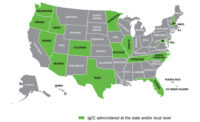The International Code Council's 2012 International Green Construction Code, or IgCC, released on March 28, seeks to provide the building community with more flexibility in the design of high-performance buildings than did earlier versions, its developers say.
The culmination of a three-year effort by the ICC, the code was developed with significant input from construction industry leaders, policymakers and environmental groups. Formally approved in November 2011, it is the first model code to include sustainability measures for an entire construction project and its site for the entire life cycle of the project.
The 2012 code incorporates the 2011 version of ANSI/ASHRAE/IES/USGBC Standard 189.1 as an optional compliance path. In earlier versions of the IgCC, jurisdictions had to choose between the IgCC and the provisions of Standard 189.1. Now, permit applicants—rather than the authorities with jurisdiction to set the code—can choose whether to follow the IgCC or the new Standard 189.1.
The publication of the new model code means that "Standard 189.1 stands on equal footing within the IgCC to provide a more complete set of options for governments and project teams alike," says Ron Jarnagin, the American Society of Heating, Refrigerating and Air-Conditioning Contractors president.
According to Brendan Owens, the U.S. Green Building Council's Leadership in Energy and Environmental Design vice president of technical development, the IgCC complements LEED, which laid much of the groundwork for the development of the IgCC and Standard 189.1. Going forward, Owens says, "what's really exciting" is that discussions have already begun on how to weave together the best options from each document in order to get to "the next level in terms of enforceability ... and rigor."



Post a comment to this article
Report Abusive Comment